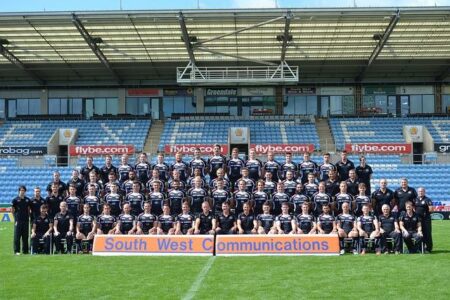As the cost of sports continues to climb, concerns about accessibility have intensified among athletes, fans, and industry insiders alike. However, a recent analysis by CNBC Sport reveals that while participation and viewership are becoming more expensive, the world of sports is not necessarily becoming less accessible. This nuanced dynamic sheds light on how evolving business models, technological advancements, and community initiatives are helping to keep sports within reach for a broad and diverse audience.
Rising Costs in Sports Spotlight Challenges for Athletes and Fans
Across the spectrum of sports, escalating expenses have become a pressing concern for both athletes and fans. From skyrocketing ticket prices to the rising costs of training equipment, the financial burden is particularly heavy on emerging talents and everyday enthusiasts eager to stay connected with their favorite games. However, despite these increases, accessibility measures such as community programs, digital streaming options, and tiered ticket pricing are helping to mitigate the impact on broader audiences.
Key factors contributing to these rising costs include:
- Enhanced stadium experiences aimed at attracting more affluent spectators.
- Inflated athlete endorsement deals driving contract values higher.
- Increased spending on broadcast technology to meet modern viewer expectations.
| Aspect | Year-on-Year Cost Increase | Impact |
|---|---|---|
| Ticket Prices | 8% | Reduced in-person attendance among casual fans |
| Training Equipment | 12% | Barrier to entry for youth athletes |
| Broadcast Subscriptions | 7% | More fans shifting to free or alternative media |
Balancing Price Hikes with Community Engagement and Inclusivity
As the costs associated with sports continue to rise, key stakeholders are prioritizing community engagement as a strategic counterbalance to avoid alienating fans and participants. Many organizations are investing heavily in outreach programs aimed at maintaining inclusivity-such as offering subsidized tickets, youth scholarships, and community clinics. These efforts ensure that the passion for sports remains accessible across diverse socioeconomic backgrounds, preserving the long-term health of the fan base.
Crucially, a multi-tiered approach is emerging where price increases coexist with value-driven experiences tailored to different audience segments. For example:
- Family-friendly promotions that provide affordable access on select game days
- Enhanced digital content extending engagement beyond physical attendance
- Local partnerships to broaden grassroots participation
| Initiative | Impact | Target Group |
|---|---|---|
| Ticket Subsidies | Increased attendance | Low-income families |
| Youth Scholarships | Talent development | Aspiring athletes |
| Community Clinics | Skills & awareness | Local residents |
Innovative Solutions to Keep Sports Accessible Amid Growing Expenses
As the financial barriers to sports participation rise, organizations and communities are stepping up with creative strategies to maintain inclusivity. One noteworthy approach involves partnerships between local governments and private sponsors to subsidize training fees and equipment costs. Additionally, the rise of digital platforms has enabled virtual coaching and shared training resources, significantly reducing travel and facility expenses for young athletes. These efforts collectively ensure that economic challenges do not silence budding talent or diminish community engagement.
Grassroots initiatives are also playing a key role in democratizing access to sports. Many nonprofits are implementing gear-exchange programs, where gently used or donated equipment is refurbished and distributed to underprivileged participants. Meanwhile, community-run leagues are embracing flexible scheduling and pay-what-you-can models to widen participation. Below is a snapshot of some of the key innovative practices reshaping the landscape:
- Sponsor-funded scholarships: enabling access for low-income youth
- Virtual clinics and workshops: reducing costs on travel and facilities
- Equipment-sharing networks: promoting sustainability and affordability
- Flexible fee structures: removing financial pressure for families
| Program | Focus | Impact |
|---|---|---|
| GearCycle | Equipment sharing | Served 3,500+ athletes annually |
| PlayForward | Virtual coaching | Reduced costs by 40% |
| AccessLeague | Sliding scale fees | Increased participation by 25% |
Policy Recommendations to Support Affordable Participation in Sports
To ensure sports remain accessible despite rising costs, policymakers must prioritize targeted subsidies for low-income families and community-based facilities. Expanding funding for public sports programs can alleviate the burden of equipment and registration fees, offering more children and adults the chance to participate regardless of their financial background. Encouraging partnerships between schools, local governments, and private sponsors can also help share the costs, making sports infrastructure more affordable and widespread.
Additionally, revising zoning laws to allow for multi-use recreational spaces and incentivizing grassroots initiatives can reduce operational expenses and boost participation rates. A strategic focus on inclusive programming – especially for underrepresented groups – will make competitive and leisure sports more welcoming and sustainable across all demographics.
- Subsidies for equipment and membership fees
- Investment in community sports hubs
- Tax incentives for private sponsors
- Flexible zoning for recreational spaces
| Policy Action | Expected Outcome |
|---|---|
| Subsidized registrations | Increased youth participation |
| Multi-use sports facilities | Lower maintenance costs |
| Community grants | Enhanced local engagement |
| Public-private partnerships | Sustainable funding streams |
In Summary
As the cost of participating in sports continues to rise, industry experts and organizations remain committed to ensuring that opportunities for involvement are not restricted by price. While expenses such as equipment, training, and facility access contribute to the growing financial burden, initiatives aimed at community outreach, scholarships, and affordable programming strive to maintain inclusivity. The evolving landscape suggests that although sports may be becoming more expensive, efforts to keep them accessible are equally gaining momentum, underscoring the ongoing balance between economic realities and the universal appeal of athletic participation.





